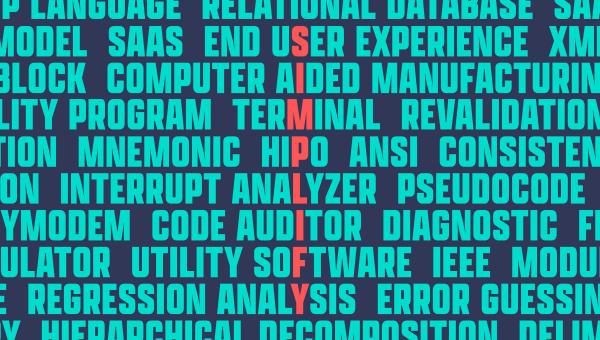Balancing Fun and Learning: Essential Strategies for Modern Educators
In today’s fast-evolving educational landscape, striking the right balance between fun and learning isn’t just a nice-to-have—it’s essential. Modern educators are tasked with fostering academic excellence while concurrently creating engaging and enjoyable learning experiences. The challenge lies in integrating educational strategies that promote both enjoyment and intellectual growth, leading to higher motivation, improved retention, and lifelong learning habits.
Why Balancing Fun and Learning Matters in Education
Balancing fun and learning is crucial for educators wanting to maximize student engagement and promote a positive classroom culture. When lessons are enjoyable,students are more attentive,collaborative,and open to exploring new concepts.
- Boosts Motivation: Enjoyable activities pique curiosity and drive intrinsic motivation to learn.
- Enhances Retention: Fun tasks help reinforce key concepts and make lessons memorable.
- Fosters Collaboration: Playful environments promote teamwork and interaction among students.
- Reduces Anxiety: Stress-free, interactive lessons can make challenging subjects approachable.
With the right educational strategies, teachers can foster a harmonious environment where learning and enjoyment go hand in hand.
Key Strategies to Balance Fun and Learning in the Modern Classroom
1. Incorporate Gamification into Lessons
Gamification leverages elements of game design—such as points, badges, and leaderboards—to increase student participation and motivation. When thoughtfully integrated, gamification transforms traditional lessons into interactive experiences.
- Use quizzes, challenges, or trivia to reinforce concepts.
- Create classroom competitions centered on academic goals.
- Reward progress with non-material incentives, like recognition or privileges.
2. Leverage Technology for Interactive Learning
Modern classrooms have unprecedented access to educational technology. Tools like interactive whiteboards, learning apps, and virtual reality simulations can make even the most complex topics engaging and accessible.
- Implement apps that support collaborative problem-solving.
- utilize educational games (Kahoot, Quizizz, etc.) to review key topics.
- Experiment with virtual field trips to bring abstract concepts to life.
3. Use Project-Based and Inquiry-Based Learning
Project-based learning (PBL) ties academic content to engaging, real-world challenges. When students work on meaningful projects, they’re frequently enough more invested and perform better academically.
- Let students choose aspects of their projects for personalization.
- Emphasize collaborative tasks that promote discussion and teamwork.
- Encourage research and exploration, not just rote memorization.
4. Foster a Playful and Positive Classroom Environment
A positive attitude toward learning starts with the classroom culture. Modern educators can set the tone by modeling enthusiasm, incorporating humor, and celebrating mistakes as learning opportunities.
- Begin each day with energizers or icebreakers.
- Organize class celebrations for milestones, big or small.
- Encourage creative expression through arts, music, and improvisation.
5. Connect Lessons to Students’ Interests
tailor lessons to involve topics and mediums students are passionate about. This boosts relevance and ensures students see the practical value of what they’re learning.
- survey students about their interests and integrate them into lesson plans.
- Use pop culture, current events, or technology trends to contextualize learning.
- Provide autonomy by offering choice in assignments or project topics.
Practical Tips for Educators to Integrate Fun and Learning Seamlessly
- Start Small: Begin by adding one fun element to your lesson plan each week.
- Gather Student Feedback: Regularly ask students what activities they enjoy and learn from the most.
- Reflect and Iterate: Continuously evaluate the effectiveness of fun activities and adapt based on classroom dynamics.
- Balance Structure and Versatility: Ensure activities are educational, but allow room for spontaneous moments of joy and creativity.
- Promote Positive Relationships: Build rapport with students to cultivate trust, which enhances both enjoyment and academic outcomes.
Case Study: Gamification Success in a Middle School Math Class
Background
Ms. thompson, a middle school math teacher, struggled to keep her students interested in algebra. She decided to gamify her lessons by introducing a point-based competition where students earned rewards for solving problems, working collaboratively, and attending review sessions.
Implementation
- Developed an online leaderboard tracking individual and group progress.
- Used Kahoot and Quizizz for quizzes, with immediate feedback and fun avatars.
- Offered class-wide rewards, such as a movie day, when collective goals were reached.
Results
After three months, Ms. Thompson observed a 25% increase in homework completion rates, improved test scores, and, most importantly, a dramatic rise in classroom participation. Students reported enjoying math more, and many took on leadership roles within group activities. This case exemplifies how integrating fun and learning can drive remarkable educational outcomes.
The Benefits of Integrating Fun in Learning Environments
Modern educators who embrace a balance between fun and learning enjoy numerous advantages:
- Student Engagement: Keeps learners actively involved and prevents boredom.
- Higher Achievement: Enjoyable lessons frequently enough lead to better comprehension and performance.
- Improved Social Skills: Group activities promote teamwork, empathy, and communication.
- Positive School Culture: Fun classrooms contribute to lower absenteeism and increased satisfaction among students and teachers alike.
First-Hand Experiance: Educator Reflections
“After integrating project-based learning and gamified assessments,I noticed my students became more confident and creative thinkers. They looked forward to each class, and their willingness to tackle challenging material greatly improved. Balancing engagement and rigor transformed my teaching—and my students’ outcomes.”
— Sarah Kim, 5th Grade Teacher
Conclusion: Transforming Education through a Balanced Approach
Incorporating fun into educational settings is not about sacrificing academic standards—it’s about enhancing them. By employing strategic, well-researched teaching methods, modern educators can cultivate vibrant classrooms where students are motivated, challenged, and, above all, happy to learn.The integration of meaningful play, technology, and personalized experiences promotes deeper understanding, long-term retention, and critical life skills.
As education continues to evolve, embracing a balance between fun and learning will be the hallmark of successful teachers—igniting curiosity, fostering resilience, and equipping students to thrive in an ever-changing world.

